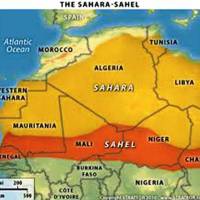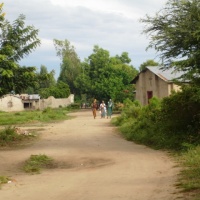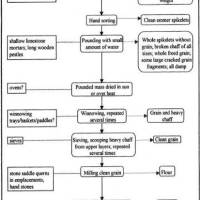This blog is about the production and consumption of traditional beers in Burundi, as described by Hans Meyer in his 1911 book:
Les Barundi, traduit de l’Allemand par françoise WILLMAN, Edition critique de Jean-Pierre CHRETIEN, Paris, Société Française d’histoire d’Outre-Mer, 275p.
As discussed in a former blog*, Meyer’s racially stilted views of the inhabitants of Burundi and of Africans in general resulted in a number of sweeping remarks that are either untrue or highly misleading. However, his information of a purely ‘technical’ nature – such as beer production – is quite interesting and is supplemented by copious footnotes of verification and further information by J-P Chrétien, in 1980, an expert in central African history and studies.
* Ethnic Psudo-histories of Central Africa – Tribes of Ham Again 2
Burundi was not systematically penetrated by colonial powers until the end of the 19th Century and early 20th Century, and therefore the data given by Meyer are windows, of a sort, to pre-colonial times.
Myer’s information on the social aspects of beer consumption are included below – though beware of the biased ethnographic critiques that he presents. Nevertheless, the data are interesting.
The text, below, I have translated from the French – followed by some remarks. It is divided into two sections, the first on Beer Consumption and the second on Beer Production. The French was difficult because it was, itself, a translation of the original German and was quite stilted.
English translation:
I. Beer Consumption
… all Barundians, men and women, of all clans, all walks of life, and all age groups, like alcohol in the form of beer (insoga). One can suppose that half at least of the annual harvest is transformed into beer. “If Barundians are, as a whole, a sober people, it is not because of virtue, but because they do not have enough to drink and eat to satisfy their appetite. They would devour an ox forthwith and if given beer they would be drunk from morning until the evening.
Intoxication is not regarded as a fault or vice, but as a proof of comfort or generosity of the host.
The months which follow the harvest of millet [and sorghum] and bananas, of July – September, are the days when beer is brewed (kwenga insoga, kutoba), a time of the feasts and bouts of drinking bouts generalized throughout all of Burundi, more precisely until provisions are exhausted. Often , after four weeks, the last drop has already spun in the throats, and hungry spirits are forced to be tempered until the next harvest.
However, in the months of orgies, cries and the songs resound in the majority of the enclosures until late in the night, because there are no quiet and solitary Burundian drinkers; drinking of beer is always with company. One invites, in turn, friends and family for these festivities, one after the other, until nothing more remains*
* J-P Chrétien: All Burundians are situated at the center of a circle of family and neighbors (abatererezi), inside of which are carried out reciprocal gifting of beer at the time of family festivals, service or exchanges…. See A.A. TROUWBORST, “Some aspects symbolic systems of the exchanges of beer in Burundi”, in “Birthday contribution to anthropology”, Leiden, 1970, pp. 143/152.
Moreover, as soon as the opportunity arises, gift jars filled with beer are organized, which the giver and the recipient empty together….
Among Burundians, remarkably, it is the women who brew the beer…and it must be said, that they participate in binge drinking…
These remarks are excellent examples of Meyer and others of the Colonial era describing activities in largely negative and racial terms. The article by Trouwborst, referenced by J-P Chrétien, above, is an early effort to move beyond these negative interpretations and seek to place beer consumption in a socio-cultural and political frame of reference.
In addition to the symbolic aspects associated with beer production and consumption, are the nutritional aspects that, even now, render these homemade brews an important part of diets in some rural areas.
II. Beer Production
Banana beer (insoga y’ivitoke) is the most widespread, popular and strongest. For its manufacture, green bananas are artificially ripened in a sort of incubation oven. This is nothing more than a pit dug into firm ground.
The bottom is lined with green banana leaves, bunches of green bananas are then stacked [on top of the leaves], and then a layer of green banana leaves is piled on top of that [covered by] dry banana leaves which are set on fire and covered with soil.
After four or five days the bananas are ripe. Then they are removed, peeled, and put in a wooden trough and crushed [by hand] with tufts of grass that are very clean.
Ripened bananas in a wooden trough being prepared for fermentation
Water is added and the solid elements are removed. The remaining juice is transferred into a large clay pot with the help of a calabash, to which is added a little sorghum flour* to aid fermentation.
After having fermented four or five days, the beer is ready and is poured into smaller jugs, ready for consumption.
* Diana: ‘AMASAKA Y’IMBRERO’ – a particular type of sorghum which is still cultivated, to be added to beer in the way described above.

Clay pots of this size or larger are used to age the beer
Social Aspects of Beer production and consumption throughout Africa
Since earliest records, the social and cultural importance of beer has been a central feature of life throughout most of sub-Saharan Africa; a gift of beer with some food was considered a minimum, necessary present on the part of a village chief to a visitor. All of the colonial explorers record the pots of beer and food that were received from the village head upon their arrival at a new village. To refuse this gift, or to refuse drinking with the headman, was considered the height of impropriety. Here is an example from Dr Livingstone:
“On arriving at Mapuio’s village [south of Lake Tanganyika], … he sent us a calabash of fresh-made beer, which is very refreshing, gave us a hut, and promised to cook for us in the evening…”
From – David Livingstone, The Last Journals of David Livingstone in Central Africa, Vol. 1, 1866-68.
Upcoming blogs will talk about the other three beers that were – and continue to be locally made: Sorghum/millet, banana wine and honey wine.
Note that the procedure and culture surrounding beer, described by Meyer, was shared by all Burundians and was not ethnically partitioned. In this and similar ways Meyer had trouble justifying his argument of the ethnic superiority of the Tutsi ‘over’ the Hutu. They were – and continue to be – one people who share one culture, one language, one land. Though, the decades of colonial, and later attempts to create two ‘races’ continues to create problems both here in Burundi and in Rwanda.
See Also:
A Colonial Description of Making Green Plantain Cider
Fresh Sorghum Beer with Stewed Roadrunner Chicken & Yellow Beans
“True African way of showing love: plenty of fat and beer”
Brewing Beer in 19th Century Africa
Sorghum Beer and Merchants in Mecca, in 1822 and in 1852



























Pingback: Sorghum Beer in Colonial Burundi and Now | DIANABUJA'S BLOG: Africa, The Middle East, Agriculture, History and Culture
Pingback: Republic of Burundi «
Hello Dianabuja. I too, would like know as much as possible about banana juice extraction and fermentation (banana beer). I would like to bring the concept to South Africa, where I live, after havinglived in Tanzania for 8 years. I understand the process of pulping the banana, but then what? How does one get juice from the pulp. Any information or lnks whatsover, would be HIGHLY appreciated. My email is johnlloyd100@gmail.com.
Regards, John
LikeLike
Hello John – Thank you and I will get back to you in a day or to on your question. Diana
LikeLike
Hallo I am researching about the banana juice you wrote in your blog
could you please send some more details about the banana juice ?
I have to find a efficient anf sanitary way to make banana juice for my school project
your details on about the process was exellent
Danke for reading my comment and please send an E mail if you have time
Please contact me if you are okay with helping!
LikeLike
Ah and my E mail is
adrs97@naver.com
Danke for helping!
LikeLike
ok – thanks!
LikeLike
Adrian – I’m happy to provide more info – but you’ll have to wait to the weekend! Glad you enjoyed the blog!
LikeLike
Adrian, where do you live?
LikeLike
I am a middle school student living inSeoul, Korea and I am researching about the banana juice
thank you for replying!
LikeLike
Hello, Adrian.
An interesting project. Is your research for a science class, or agriculture, or – ?
As for banana juice here and elsewhere in Africa, traditionally it is always fermented and there are reasons for that. I’ write a little blog about it, hopefully to finish over the weekend. Diana.
LikeLike
The research is for science class, and the topic is “Appropriate technology”
I am grateful for your interest
Thanks!
LikeLike
thank you, Adrian, for information on your research.
LikeLike
이거이거 김준석인가…ㅋㅋㅋ
LikeLike
Pingback: Brewing Sorghum Beer in Burundi, 19th Century and Now « Dianabuja's Blog
Pingback: Bananas on TV and the blogosphere